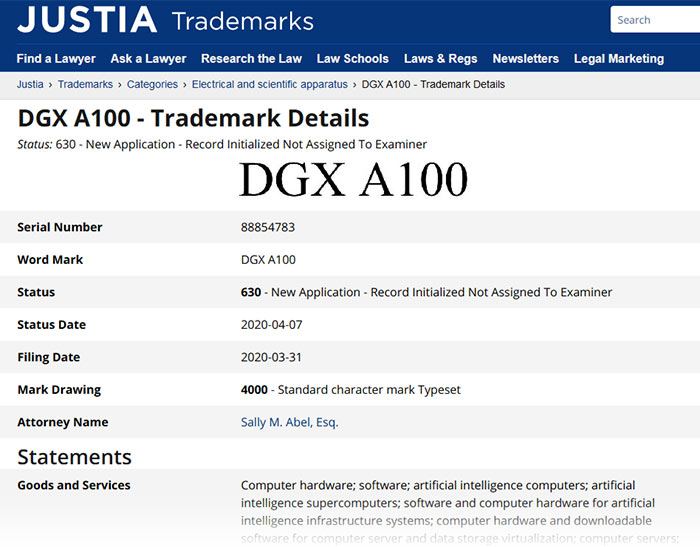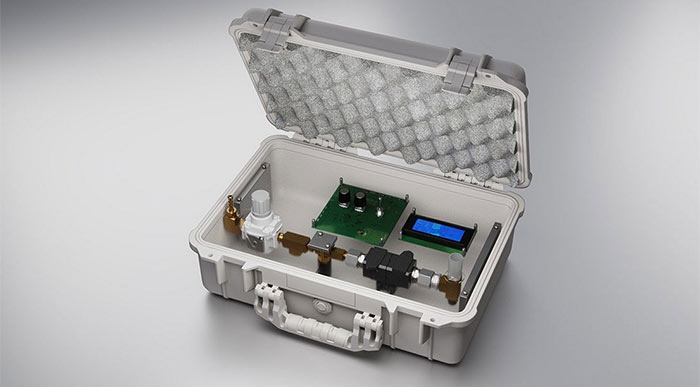A new entry for an Nvidia DGX A100 system was discovered in the Justia trademark database this weekend. Twitter tech spotter Komachi brought the listing to light. If you head on over to this link you can see that the DGX A100 trademark was applied for by Nvidia and refers to computer hardware used for AI supercomputing, Machine Learning, HPC and so on - covering a very wide range of possible uses.
A week ago HEXUS reported on Nvidia's tease that we should 'Get Amped' for the GTC 2020 digital keynote. You will be able to plug yourself in at Nvidia's YouTube channel at 6am PT (2pm BST) on Thursday 14th May. With the above trademark emerging and the 'Get Amped' hint it looks pretty certain that at least one of the announcements will be of an Nvidia Tesla A100 processor, based on the GA100 GPU, which will power the upcoming DGX A100 system.

Nvidia DGX systems have been released as deep learning workstations with new GPU generations since the first Pascal GPU was unveiled. Currently Nvidia sells the DGX Station fully integrated 'office datacentre' system, the DGX-1 rackmount server, the DGX-2 2 petaFLOPS system, and the DGX POD for AI enterprise tasks. You can read about each of these specific products on the official DGX systems page.
We don't know what else might be under the bonnet in a Nvidia DGX A100 'Ampere' deep learning system other than a number of the Tesla A100 processor cards, based on the GA100 GPU. Looking at existing products - the DGX-2, for example, combines 16 interconnected GV100 GPUs (totalling 81920 CUDA cores) with 512GB of HBM2.
If you are really keen to know more, it is only 10 days until the official keynote. Hopefully we will find out some details on Nvidia's consumer graphics plans too.
Nvidia's low-cost, open-source ventilator design
On Friday Nvidia published a blog about an open-source design for a low-cost, easy-to-assemble mechanical ventilator, designed by Nvidia Chief Scientist Bill Dally. The ventilator uses approx $400 of off-the-shelf parts and is said to be quick to build.

Currently between 0.3 per cent and 0.6 per cent of Covid-19 patients develop acute respiratory distress syndrome severe enough to need a mechanical ventilator, observes Nvidia. A newer big concern seems to be about oxygen supply.













